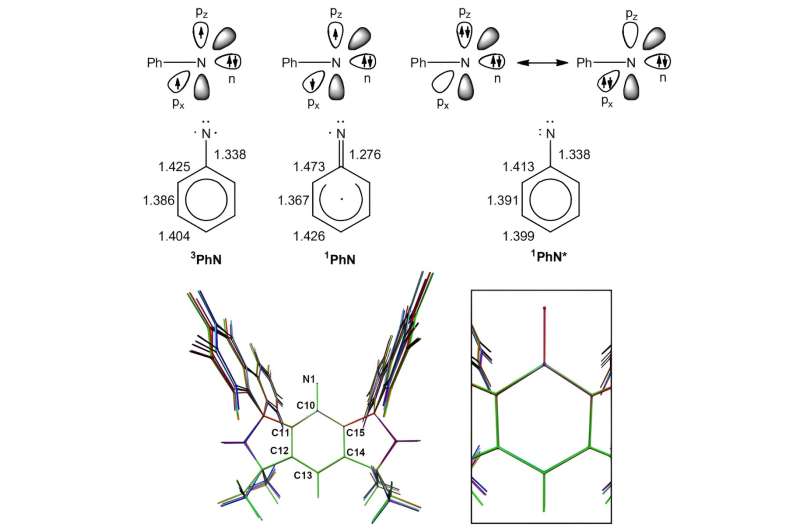June 20, 2024 report
This article has been reviewed according to Science X's editorial process and policies. Editors have highlighted the following attributes while ensuring the content's credibility:
fact-checked
peer-reviewed publication
trusted source
proofread
Chemists develop technique for extending nitrene reactions to three days

A team of chemists at the University of Bremen, in Germany has developed a new type of nitrene capable of slow reactions that can last for up to three days. Their paper is published in the journal Science.
Nitrenes (reactive intermediates and analogs of carbenes) are types of electrophile molecules that have a neutral atom bonded to a single other substituent. Because they have just six electrons in their valence level, they have brief reaction times, generally measured in the nanoseconds. That has made it difficult for chemists to use them in commercial applications.
In this new study, the researchers have found a way to dramatically slow nitrene reactions, by synthesizing a slow-reacting nitrene, possibly allowing for a whole new class of nitrenes that could be used in a wide variety of applications.
To achieve this feat, the research team employed the use of a MSFluind—a type of chemical scaffolding first built back in 2011 by another team. It has been used in other recent research efforts to stabilize other molecules, some of which are similar to nitrenes.
Using the scaffolding, the researchers were able to separate the components in a reaction from accessing the nitrogen atom, allowing for a much slower process. More specifically, they shone an ultraviolet light on a sample of MSFluindN3(an azide precursor), which reduced it to MSFluindN.
The researchers then subjected the newly synthesized nitrene to X-ray crystallography to learn more about its characteristics, followed by electron paramagnetic resonance spectroscopy and then superconducting quantum interference device magnetometry.
They confirmed that it had kept its spin-triplet ground state and persisted for up to three days. They also note that such imaging techniques are not normally possible with nitrene due to their fast reaction times.
The research team suggests their newly developed technique should allow for the synthesis of new transition metal complexes.
More information: Marvin Janssen et al, Synthesis of a stable crystalline nitrene, Science (2024). DOI: 10.1126/science.adp4963
Journal information: Science
© 2024 Science X Network





















